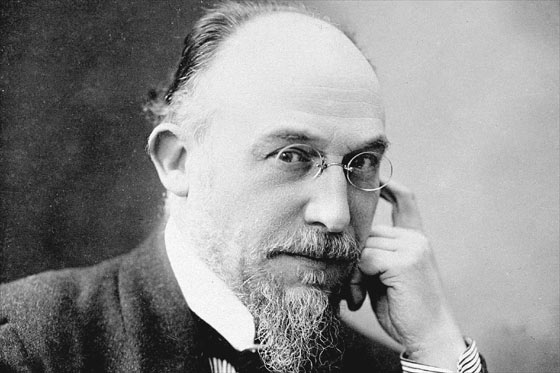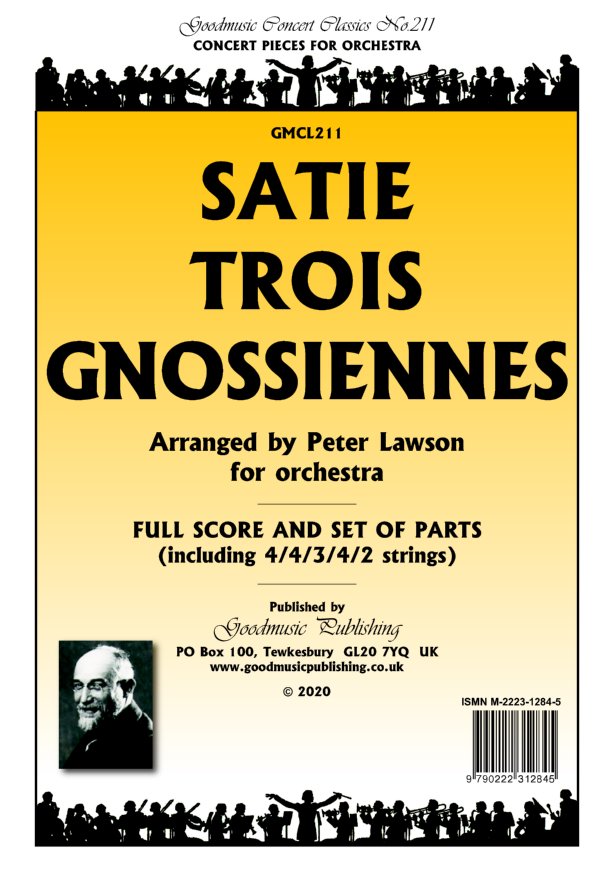Trois Gnossiennes
Buy this item (in stock)
Product ID: GM1 CL211
By Erik Satie
Publisher:
Goodmusic
Arranger:
Peter Lawson
Series:
Goodmusic Concert Classics
Genre:
Impressionism
Line Up:
Symphony Orchestra
Duration:
&:30
Level: 3-4
Set & Score
This item is in stock
About this item
Erik Satie composed his Trois Gnossiennes between 1890 and 1893. The word Gnossiennes was artificially invented by Satie. At that time, he was interested in Gnosticism, or the seeking of wisdom as a result of helping others. Others attribute the title to the Cretan word 'knossos' or 'gnossos'. The remains of the Palace of Knossos were first discovered in 1878 and there was much talk at the time of the connection to the myth of Theseus, Ariadne and the Minotaur.
The Gnossiennes are dreamy, mysterious, harmonically modal and similar to each other in mood being rather 'Middle Eastern' in their melodic construction. They were originally written in free time, without time signature and bar lines, the idea presumably being to invite freedom of interpretation. For this orchestration, I have put in bar lines and time signatures, as it would clearly be confusing in rehearsal if there was no clarity for the conductor to indicate from where to stop and start! However, the bar lines should not be regarded as a constriction and I have indicated that each piece should be rather rubato in tempo. I have tried to reflect the relaxed, hypnotic mood and let solo instruments carry the melodic lines and tell the story.
Instrumentation
Flute, Piccolo, Oboe, 2 Clarinets in Bb, 2 Bassoons, 2 Horns in F, 2 Trumpets in Bb, 3 Trombones, Tuba, Timpani, Percussion (2 players: Tam-Tam, Tambourine, Glockenspiel), Harp (or Keyboard)
Strings (Violin 1, Violin 2, Viola, Cello, Bass)
Reviews and rating
No review available, be the first to write one!

Composer
Erik Satie (1866-1925)

Éric Alfred Leslie Satie (pronounced: [eʁik sati]) (17 May 1866 – Paris, 1 July 1925; signed his name Erik Satie after 1884) was a French composer and pianist. Satie was a colourful figure in the early 20th century Parisian avant-garde. His work was a precursor to later artistic movements such as minimalism, repetitive music, and the Theatre of the Absurd.[citation needed]
An eccentric, Satie was introduced as a "gymnopedist" in 1887, shortly before writing his most famous compositions, the Gymnopédies. Later, he also referred to himself as a "phonometrician" (meaning "someone who measures sounds") preferring this designation to that of a "musician", after having been called "a clumsy but subtle technician" in a book on contemporary French composers published in 1911.
More info about the composer...



 Click above to view samples
Click above to view samples
